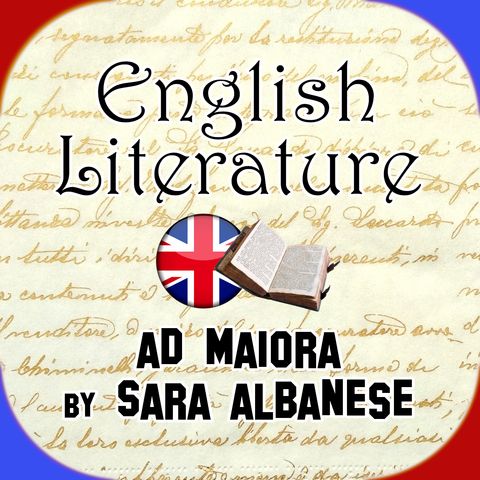English Literature 4 - Romanticism: main features, social context and key concepts
4 dic 2019 ·
28 min. 36 sec.

Scarica e ascolta ovunque
Scarica i tuoi episodi preferiti e goditi l'ascolto, ovunque tu sia! Iscriviti o accedi ora per ascoltare offline.
Descrizione
Also called the "Age of Revolutions", the Romantic period (19th century) was deeply infuenced by political, social and economical events (American and French Revolution, Industrial Revolution, Agricultural and Transport Revolution,...
mostra di più
Also called the "Age of Revolutions", the Romantic period (19th century) was deeply infuenced by political, social and economical events (American and French Revolution, Industrial Revolution,
Agricultural and Transport Revolution, social unrests, Adam Smith's work, Rousseau's philosophy...), developing a large and multifaceted movement, whose currences involved Literature and Arts throughout Europe.
In this video the main concepts and the most important features of the movement are displayed in a large resume that includes the main theme of Nature as a source of inspiration for the Poet whoapproaches it as an "organic living whole". The independence of the artist is also explained, together with the image of the "poet prophet", whose perspective was based on imagination,
subjectivity and symbolism.
Burke's idea of "beautiful" and "sublime" is associated with some of the poets of the first generation (Blake, Wordsworth, Coleridge) and of the second generation (Lord Byron, P.B. Shelley, Keats), while their works are also considered in connection with a social attitude of criticism towords the Industrial Revolution and its negative consequences on nature and on the human being..
Fiction is also mentioned, together with the new image of the writer as a professional who needs to "sell" a new product, thus a new debate about "good and bad literature" has been developed throughout the centuries.
Some important novelists of the time are briefly introduced, like for example Ann Radcliffe with her Gothic works, Jane Austen with her Novel of Manners and Mary Shelley with her Science Fiction.
mostra meno
Agricultural and Transport Revolution, social unrests, Adam Smith's work, Rousseau's philosophy...), developing a large and multifaceted movement, whose currences involved Literature and Arts throughout Europe.
In this video the main concepts and the most important features of the movement are displayed in a large resume that includes the main theme of Nature as a source of inspiration for the Poet whoapproaches it as an "organic living whole". The independence of the artist is also explained, together with the image of the "poet prophet", whose perspective was based on imagination,
subjectivity and symbolism.
Burke's idea of "beautiful" and "sublime" is associated with some of the poets of the first generation (Blake, Wordsworth, Coleridge) and of the second generation (Lord Byron, P.B. Shelley, Keats), while their works are also considered in connection with a social attitude of criticism towords the Industrial Revolution and its negative consequences on nature and on the human being..
Fiction is also mentioned, together with the new image of the writer as a professional who needs to "sell" a new product, thus a new debate about "good and bad literature" has been developed throughout the centuries.
Some important novelists of the time are briefly introduced, like for example Ann Radcliffe with her Gothic works, Jane Austen with her Novel of Manners and Mary Shelley with her Science Fiction.
Informazioni
| Autore | Ad Maiora - Sara Albanese |
| Organizzazione | Ad Maiora - Sara Albanese |
| Sito | - |
| Tag |
Copyright 2024 - Spreaker Inc. an iHeartMedia Company
